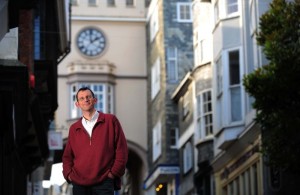I leave you this week in Houston. An oil ton if there ever was one. Got to love a group that is trying to do without hydrocarbons altogether. They claim they are moving to a new site BUT I couldn’t get there yet, so here is a sample of their old site.
http://transitionhouston.wordpress.com/
Movin’ on…
The website subgroup of the Outreach and Education Action Group has been working on an updated website for Transition Houston for some time, and all that effort is paying off! We are going to concentrate our information share and move content to the new site: www.transitionhouston.org. Please bookmark that location and check with us often for news about Transition in the Houston region, Neighborhood Initiative and Action Group updates, calendar, newsletter archive, and more!
Once again, the new Transition Houston website:
www.transitionhouston.org
There are several other options for connecting with us.
We are on Ning.
We are on Facebook.
We are on Twitter.
And you can subscribe to our Newsletter!
Filed under Uncategorized
Permaculture goes mainstream, hope rises
Sometimes little things give hope that progress is possible, and that maybe “if we act as communities, it might just be enough, just in time,” to quote the Cheerful Disclaimer. This last week the little thing for me was the discovery of permaculture by the New York Times. Now, I’m not so naive to believe that seeing permaculture in the mainstream press is going to make a lot of difference immediately, although I wouldn’t be surprised to see a surge of interest in permie classes across the country with long-term benefits to both participants and the environment (FYI, classes are offered here in Houston by the Permaculture Guild of Houston, through Urban Harvest).
I think the important point is that awareness is growing in our country: awareness of our ecosystem impacts, awareness of the lack of sustainability in our lifestyles and economy, and also awareness of that which is missing in our lives–community, connection, purpose. Permaculture is a positive response to that growing awareness, as is the permaculture-based Transition movement.
There are a couple of opportunities to join with others in our Transition Houston community this week and next. Please avail yourself of these options to increase your awareness and find connection with a community of folks working for a resilient Houston region.
Transition Houston Hub meeting, Tuesday, August 2, 7:00pm to 9:00pm
Green Film Series Presents Blue Gold: World Water Wars, Tuesday, August 9, 6:30pm to 9:00pm
Transition Houston Hub meeting, Tuesday, August 2, 7:00pm to 9:00pm
We hope to see you at Tuesday’s Transition Houston meeting, which will feature a guest speaker in addition to news from the Transition Neighborhoods and Action Groups.
We are very fortunate to have Peter Wang, League of American Bicyclists Cycling Instructor, as our guest speaker. Peter is considered a local biking expert. He’s everywhere as a go-to guy for media interviews about bikes, and has been involved in a lot of bicycle issues. He is risk-averse–exactly the kind of guy you would want to help you practice being safer!–and has taught a lot of these safety classes.
Peter will present a video screening followed by a discussion. The video is Enjoy The Ride, about essential bicycling skills.
:}
More whenever.
:}



 For more about this website and what is all about take a look at the page
For more about this website and what is all about take a look at the page 


 Are you
Are you 